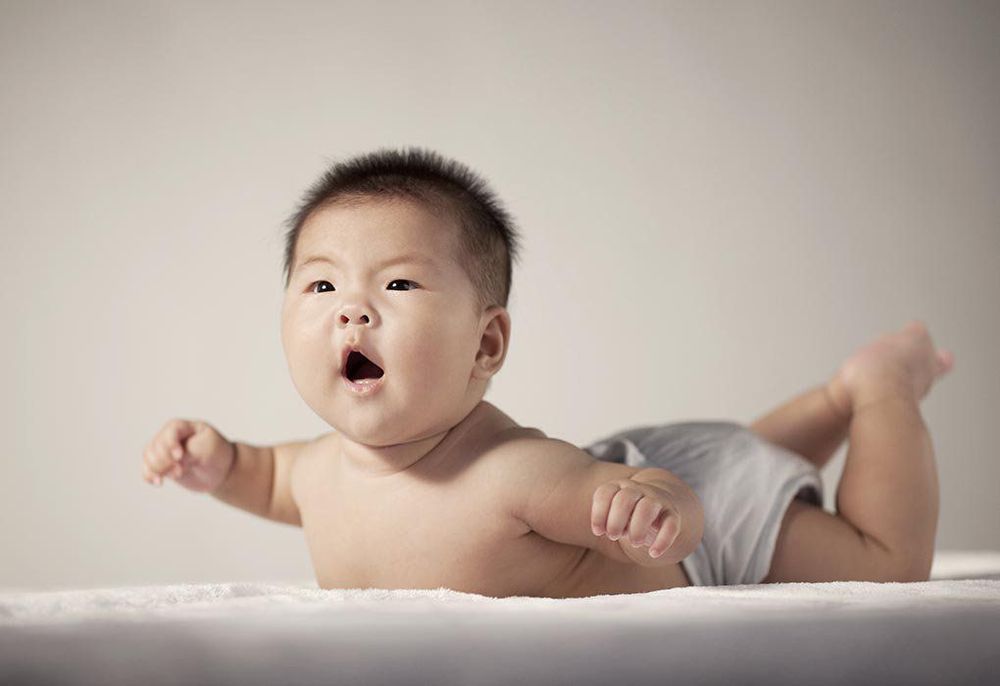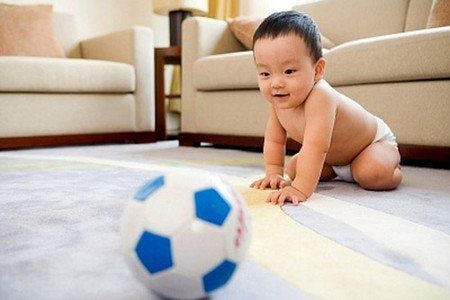This is an automatically translated article.
The article is professionally consulted by Master, Doctor Nguyen Thi An - Pediatrician - Neonatologist - Department of Pediatrics - Neonatology - Vinmec Ha Long International General Hospital.Newborns have their own way of reacting to some bumps. And each baby has the ability to correctly recognize his mother's voice, smell, and face. When taking care of the baby every day, monitoring the baby's development, you will notice that there are many interesting things in the baby, which will help you be more interested in taking care of a baby.
1. Newborn reflexes
A reflex is an unnatural response to an external stimulus. Certain sensations or movements will produce a specific muscle response. The appearance and strength of a reflex is one of the important indicators of the development and function of the nervous system in a child.Many reflexes in infants disappear as the child grows, while some remain until adulthood. If a reflex should have gone away as a child gets older, but it persists, it could be a sign of damage to the child's brain or nervous system.
Reflexes in infants are normal for them, but abnormal in children of other ages. These reflexes include:
Moro reflex: This reflex occurs when the baby's head changes position suddenly or falls backwards, or the baby is startled by something. The baby will then respond by flinging his arms and legs out and stretching his neck, then quickly bring his arms back and he may cry loudly. The Moro reflex, which can be present to varying degrees in different infants, peaks within the first month and disappears by two months. Sucking reflex: This is a vital reflex that is present before birth, when you have an ultrasound of the fetus, it is very likely that the baby is sucking its thumb. After birth, when the mother's nipple or bottle is placed in the mouth or touched around the baby's mouth, the baby will automatically latch on to the nipple and suck (sucking). This reflex actually takes place in two stages: First, the mother places the baby's lips around the areola (the round, pigmented skin surrounding the nipple) and brings the nipple between the baby's tongue and the roof of his mouth. Then in the second stage, the baby's tongue will move from the areola to the nipple. This whole process is aided by the negative pressure, or suction, that holds the breast firmly in the baby's mouth.
Coordinating these rhythmic sucking movements with breathing and swallowing is a relatively complex task for infants. So even though this is a reflex, not all babies feed well the first time. With practice, however, reflexes become a skill that all children can master.
As reaching, sucking, and bringing hands to mouth becomes more oriented, babies will begin to use these movements to comfort themselves. Your baby can also be comforted when you give her a pacifier or when you help her find her thumb or fingers to suck on.

Phản ứng mút tay của trẻ để tự an ủi mình

Phản xạ nhảy dù ở trẻ sơ sinh
Blink reflex: the baby will blink when something is about to touch the eye or when there is a sudden appearance of light. Cough reflex: Children cough when their airways are irritated. Vomiting reflex: Children vomit when the throat or back of the mouth is irritated. Sneeze reflex: Children sneeze when their nasal passages are irritated. Yawn reflex: Babies yawn when their body needs more oxygen.
2. Newborns recognize their mothers with many senses
An infant's brain allows them to learn from birth using their senses. Newborns can recognize their mothers through:Voice: Newborns recognize their mother's voice from birth. This means that babies have heard and memorized their mother's voice since they were in the womb, even though they don't understand or remember what their mother said. Scent: Newborns respond to their mother's scent soon after birth. Within a few days, breastfed babies can smell the difference between their mother's milk and someone else's milk. Faces: Newborns can see and distinguish faces and prefer their mother's face.

Trẻ có thể nhận dạng mẹ bằng khuôn mặt
3. You should talk to babies more
One of the easiest things you can do to help your baby's intellectual development is to talk to her face-to-face from day one. You can describe what you are doing or point out what you see. Not only will these conversations help you bond with your baby, but it's also more beneficial than you think.Those benefits are not achieved overnight. Even babies will react when you talk to them, such as turning their heads, making eye contact with you, wiggling their bodies, or kicking their legs.
Research shows that children whose parents talk to them a lot when they are young, develop higher language skills and a richer vocabulary, which affects academic performance children's future.
Newborns do not get the same benefit from hearing others talk directly to each other or by passively listening to media, such as audio books. The American Academy of Pediatrics recommends turning off all screens (including televisions, phones, computers) around children under 18 months.
4. The range of children's development is very wide
It's hard not to worry when your child is developing at a different rate from their peers. But because babies develop on their own timetable, there are many things that are considered normal. Premature babies often take longer to reach developmental milestones.For example, while most babies begin to walk when they are 12 to 15 months old, there are still other children who do not master this skill until they are 16 or 17 months old.

Trẻ sinh non có phát triển theo thời gian biểu riêng
5. Newborns move in different ways
Newborns move in different ways. The baby's movements usually appear in the following sequence: the baby rolls over, turns over, then he learns to sit, crawl, crawl, get up, walk, and run. However, some babies will move around by rolling or crawling like commandos.As long as your baby is learning to coordinate his body parts and use his legs and arms equally, and is developing according to age-appropriate milestones, you don't need to worry. But talk to your doctor if you have any questions about your
baby's mobility or development.
To help children achieve the best developmental milestones, parents should supplement their children with supporting products containing lysine, essential micro-minerals and vitamins such as zinc, chromium, selenium, and B vitamins to help meet their needs. meet the nutritional needs of children. At the same time, these essential vitamins also support digestion, enhance nutrient absorption, help improve anorexia, help children eat well, and develop comprehensively.
Please regularly visit Vinmec.com website and update useful information to take care of your baby and family.
References: babycenter.com, healthychildren.org, medlineplus.gov













